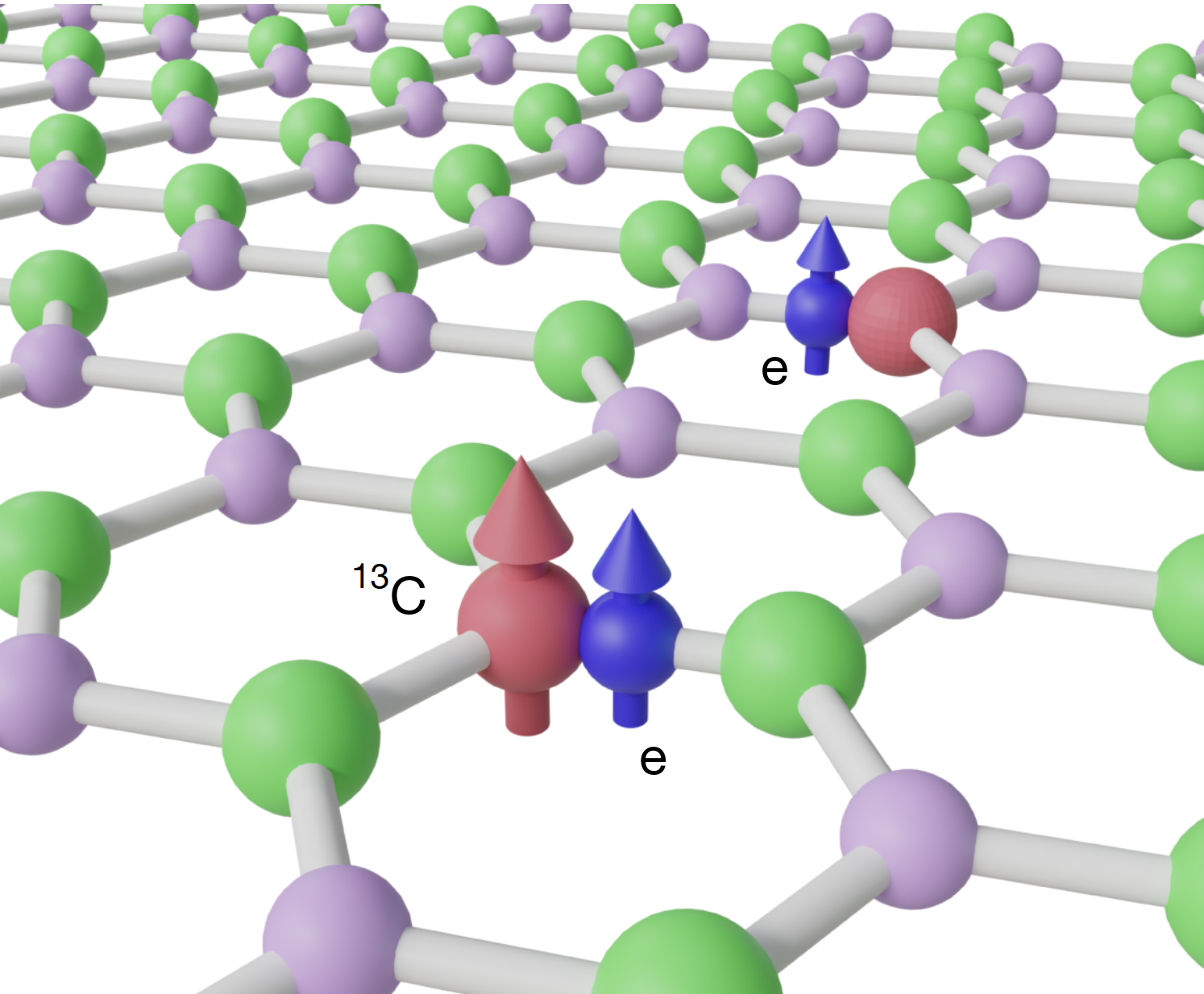
Congratulations to Kejun Li, Shimin Zhang, and Yuan Ping for their work with Xingyu Gao, Sumukh Vaidya, Zhun Ge, Saakshi Dikshit, Peng Ju, Kunhong Shen, Yuanbin Jin, and Tongcang Li for their work on “Single nuclear spin detection and control in a van der Waals material”, published in Nature on July 09! Link to the published article.
Optically active spin defects in solids are leading candidates for quantum sensing and quantum networking. Recently, single spin defects were discovered in hexagonal boron nitride (hBN), a layered van der Waals (vdW) material. Owing to its two-dimensional structure, hBN allows spin defects to be positioned closer to target samples than in three-dimensional crystals, making it ideal for atomic-scale quantum sensing, including nuclear magnetic resonance (NMR) of single molecules. However, the chemical structures of these defects remain unknown and detecting a single nuclear spin with a hBN spin defect has been elusive. Here we report the creation of single spin defects in hBN using 13C ion implantation and the identification of three distinct defect types based on hyperfine interactions. We observed both S = 1/2 and S = 1 spin states within a single hBN spin defect. We demonstrated atomic-scale NMR and coherent control of individual nuclear spins in a vdW material, with a π-gate fidelity up to 99.75% at room temperature. By comparing experimental results with density functional theory (DFT) calculations, we propose chemical structures for these spin defects. Our work advances the understanding of single spin defects in hBN and provides a pathway to enhance quantum sensing using hBN spin defects with nuclear spins as quantum memories.
The theory part of the work is supported by NSF CAREER award under grant #DMR2143233.